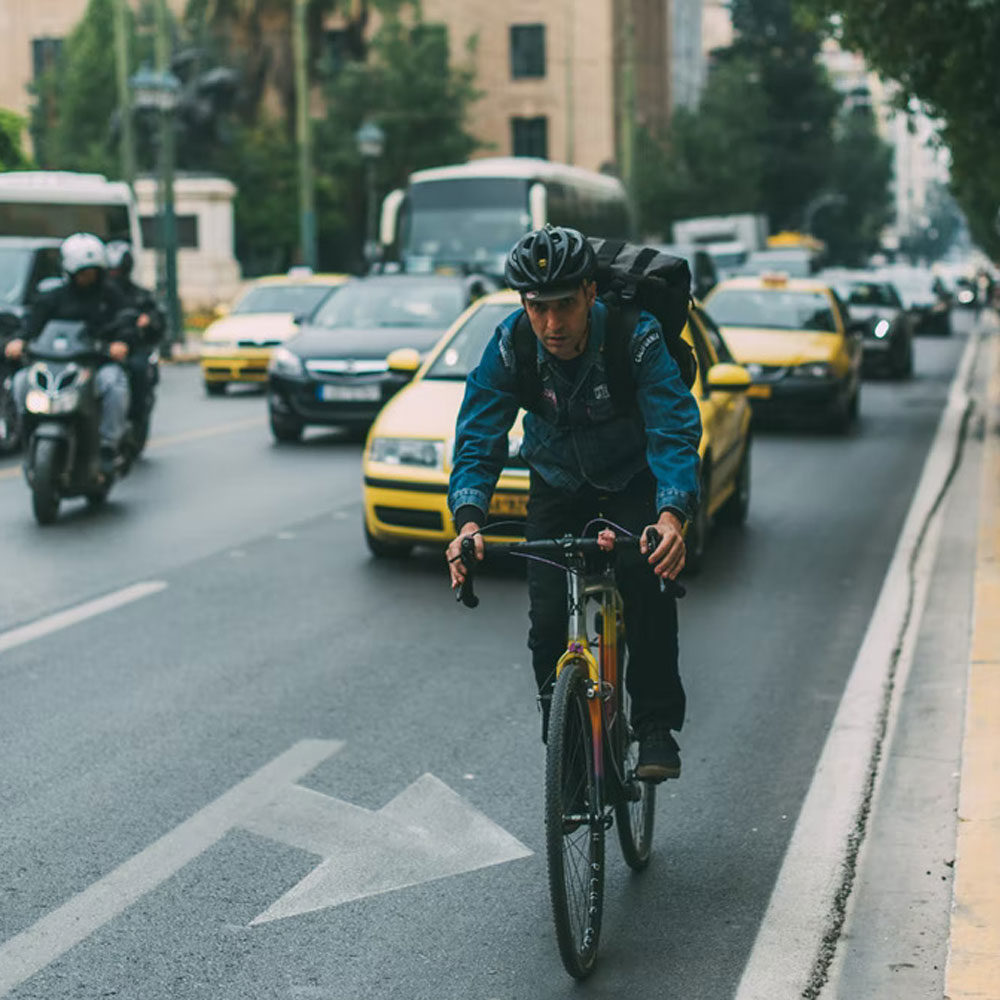
Years ago, I occasionally commuted by motorcycle. In some ways it was a lot like bicycle commuting. I was the little guy, and very vulnerable without the protection of a steel cage, air bags, or seat belts. At times I felt like nobody even saw me! This vulnerability was accompanied by high speeds on the highway, and being part of traffic in the city. Although my motorcycle commuting days didn’t last that long, I learned some valuable traffic skills that I still use when cycling on the road.
I took a weekend long motorcycle safety class, and one thing they stressed heavily was the SIPDE Process. As we ride through the city, there are hundreds of things going on around us. In a single city block there may be pot holes, car doors opening, pedestrians crossing the street, traffic from the rear, and traffic exiting parking lots. The SIPDE process helps you deal with the unpredictable nature of urban cycling. Here’s the breakdown of the SIPDE acronym:
- Scan – Constantly scan the environment around you. If you focus on only one thing, like a pedestrian crossing the street, you may miss other hazards like the person getting ready to open their car door next to you.
- Identify – As you’re scanning, identify all the potential hazards. “Filter out the noise”, and identify what’s important. Don’t forget to identify potential problems approaching from the rear as well!
- Predict – You’ve identified the potential hazards, now predict what the outcomes will be if certain scenarios play out. Focus on the worst case scenarios. You may be able to swerve around a pedestrian, but probably won’t survive tangling with a garbage truck. Prioritize accordingly.
- Decide – Decide on a course of action that you would follow, should one of the scenarios you predicted plays out.
- Execute – Execute the course of action you decided on.

As cyclists, we have better than average motor skills than most, so naturally we do a pretty good job with the Decide and Execute parts of SIPDE. Where we run into trouble is the Scan, Identify and Predict portions. These are skills that take experience, practice, and constant attention.
Just in the last couple months, there have been a couple of tragic cyclist deaths involving very large trucks turning right into the cyclist’s path. Unfortunately it was too late for Decide and Execute for these people when the accidents occurred. It’s possible that better Scanning, Identifying, and Predicting may have saved their lives. Since we cyclists are so vulnerable, we must never take for granted the actions of those around us. Never assume that cars are going to follow the rules or properly signal their direction. Sometimes people just change their minds at the last second. Use your SIPDE, and stay safe on your commute!